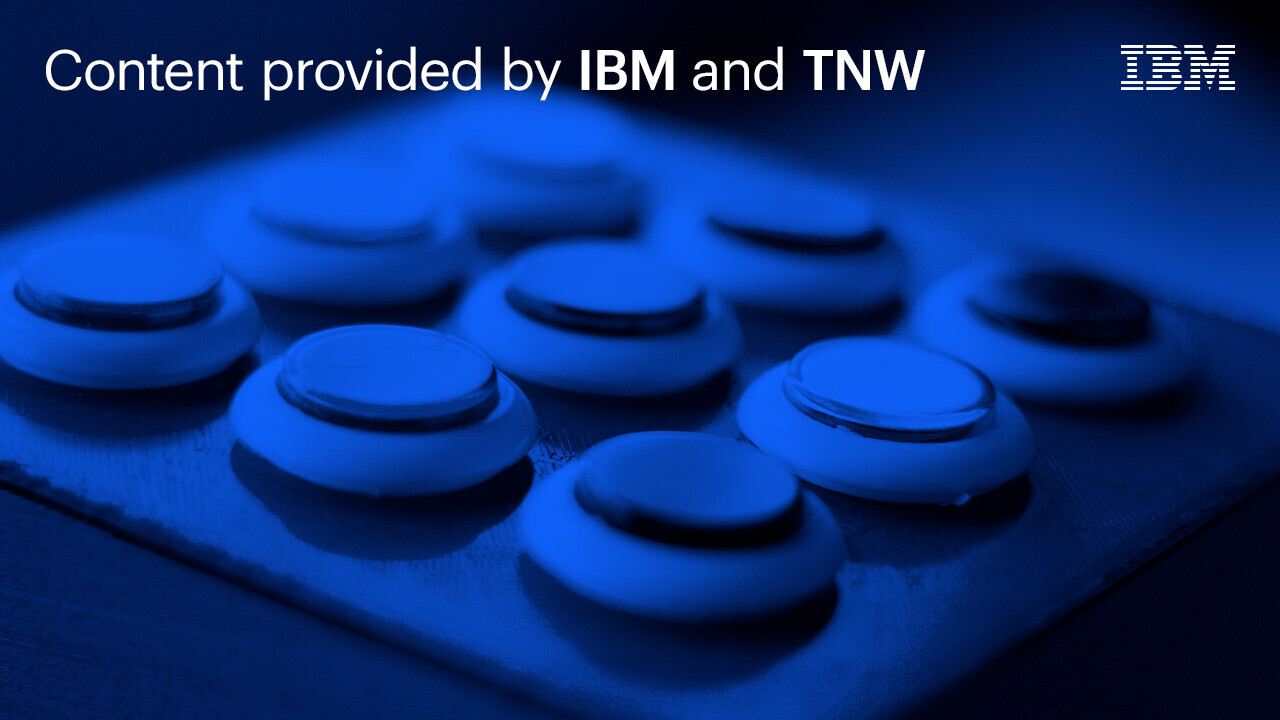
Content provided by IBM and TNW
Thanks to the convergence of several trends and changes across different markets and industries, automation is becoming a critical factor in the success of businesses and products. Advances in artificial intelligence, in parallel with the accelerating digitization of all aspects of business, are creating plenty of opportunities to automate operations, reduce waste, and increase efficiency.
From managing your Information Technology (IT) bill to finding bottlenecks in your business processes and taking control of your own network operations, here are three areas where companies can gain from applying automation.
1. IT automation
Practically every large organization has IT. Even small companies that don’t have in-house IT staff may pay for another company to do it for them. The growing demand for IT can put extra strain on professionals who must deal with the ever-expanding and changing landscape of application and compute platforms.
“I’ve never met an IT person or CIO who said they have so much time and budget that they can do everything the business asks and more. There’s always a shortage of ability to drive projects through IT,” says Bill Lobig, Vice President of IBM Automation Product Management.
The talent shortage is highlighting the need to provide automation tools to IT staff so they can manage application uptime and keep IT operations stable.
Fortunately, advances in artificial intelligence are helping companies move toward smart automation by gathering and processing all sorts of structured and unstructured data.
“We’re seeing companies have more confidence in applying AI to a broader set of data, including log files and metrics and information that are spinning off of the systems that are running in your business (databases, app servers, Kubernetes, VMs),” Lobig says.
Previously, IT experts may have optimized their infrastructure through informed judgments and overprovisioning their resources. Now, they can take the guesswork out of their decisions by using AI to analyze the data of the IT infrastructure, find patterns, estimate usage, and optimize their resources.
For example, J.B. Hunt, a logistics and transportation company, uses IBM Turbonomic software to automate the scaling of its cloud and on-premise resources. For their on-premises environment, J.B. Hunt is automating all non-disruptive actions 24×7 and scaling non-production actions during a nightly maintenance window.
“Workloads scale and spike—it’s not static. No matter how much performance testing and capacity you put into sizing an application deployment, it’s a guess, albeit an educated one. You don’t really know how your customers’ workloads are going to vary across different times,” Lobig says.
In their public cloud environment, the J.B. Hunt team has been using a combination of recommendations and automated actions to manage their resources. Over the course of 12 months, Turbonomic executed nearly 2,000 resizing actions which—assuming manual intervention requires 20 minutes per action—freed up over 650 hours of the team’s time to focus on strategic initiatives.
2. Business processes
Business processes are another area that can gain from advances in AI and automation. The previous wave of automation in business processes was mostly driven by robotic process automation (RPA). While RPA has had a tremendous effect on productivity, like other solutions, it has limits too.
RPA only addresses tasks that you think need automation. It can automate a poorly designed process but can’t optimize it. It also can’t handle tasks that can’t be defined through deterministic rules. This is where “process and task mining” enter the picture. According to Lobig:
RPA executes scripts to automate what you tell it to do. It’s very deterministic and rigid in what it can do, automating highly repeatable tasks. Process and task mining find inefficiencies you can’t see.
Process and task mining can answer questions such as, is your business really running the way you think it is? Is everyone completing processes in the same way? What should you optimize first? It helps you get past the low-hanging fruit and find the hidden inefficiencies of your business that can also be addressed with automation.
3. Networking
In the past, networking was a specialized hardware-based discipline largely controlled by big telecommunications companies. Today, the networking ecosystem is more complex as enterprises now require ubiquitous application distribution in a hybrid multi-cloud environment, from customer prem, to edge, to private and public clouds.
The challenge is deploying and connecting all application endpoints at scale. Networks must be agile and dynamic to maintain application performance, availability, security and user experience. Today’s networks, however, face unprecedented challenges that can render them unresponsive and unadaptable to change. Enterprise and service providers can address those needs, delivering custom enterprise network value with self-service enterprise control.
Organizations can now own and manage their networking functions and end-to-end connectivity without being experts in switches, routers, radio-access networks, and other hardware.
“Networking has become just another part of the application supply chain (like databases, VMs, and containers) that companies are already running. Why not have your network be part of your full IT landscape so that you can apply AI to optimize it?” Lobig says.
For example, consider a large multinational bank that provides its customers access to their accounts overseas through ATM machines. The company previously outsourced network connectivity to a big telco. When the telco faced an outage in one country where the bank provided service, the customers could not access their funds. Although the bank didn’t have control over the networking service, it was fined for the outage.
Now, thanks to software-defined wide area network (SD-WAN) and automation and orchestration tools such as IBM’s AIOps solutions and IBM SevOne Network Performance Management, the bank can assume control of its own software-defined network, instead of shifting such an important responsibility to another company. New application-centric network connectivity can enhance those capabilities. This can drive enhanced security, intelligent observability, and service assurance, while providing a common way to manage networks across the diversity of infrastructure, tools, and security constructs.
Another area of networking that will provide new opportunities for automation is 5G.
“A lot of people think about 5G as a faster networking technology. But 5G is going to transform and disrupt B2B use cases. It can really bring edge computing to the forefront,” Lobig says.
There’s an opportunity for organizations to leverage software-defined networking and 5G to unlock new business models where high-bandwidth, low latency, and local connectivity is crucial.
An example is DISH Wireless, a company that’s working with IBM to automate the first greenfield cloud-native 5G network in the US. DISH Wireless is using IBM’s network orchestration software and services to bring 5G network orchestration to its business and operations platforms. One application they’re working on is enabling logistics companies to track package locations down to the centimeter, thanks to edge connectivity, RFID tags, and network management software.
“We’re helping them do this with our telco and network computing automation, edge computing automation, and enabling them to set up state-of-the-art orchestration for their customers. These unexpected industries can use 5G to really transform how business gets done across different areas,” Lobig says.
Where is the industry headed?
Automation is quickly evolving and we’re bound to see many new applications in the coming months and years. For companies that are at the beginning of their automation journey, Lobig has a few tips.
In the business automation space, look at process and task mining. Do you really know where the time is being spent in your enterprise? Do you know how work is getting done? If you use this technology, you’ll be able to identify the patterns and sequence of events that go into good outcomes and those that go into bad outcomes. Armed with these insights, you can redesign and automate the processes that have the biggest impact upon your business.
Lobig also believes that IT automation will be a bigger theme in 2023 as the world faces an energy crisis and electricity costs potentially become an escalating problem. IT automation can help organizations to use the capacity they need, which may translate into savings.
IT automation can also be important in tackling the climate change crisis.
“These days, you can tell whether your organization’s data center or workload is running on a renewable energy source,” Lobig says. “With that data, IT automation has the potential to automatically move workloads from cloud to on-prem and back and across hyper-scalers to optimize for costs and efficiencies.”
As for the future, Lobig believes that low-code/no-code application platforms will play an important role in automation by enabling more employees to build the automations that can enhance productivity.
Get the TNW newsletter
Get the most important tech news in your inbox each week.






